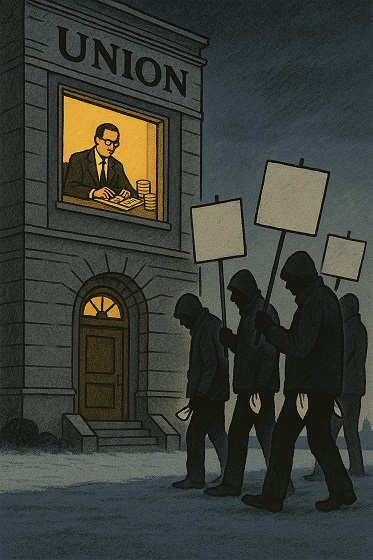Alberta
Cenovus CEO Pourbaix to step down, become executive chair; Jon McKenzie to be new CEO
By Amanda Stephenson in Calgary
Cenovus Energy Inc. chief executive Alex Pourbaix will step down from his CEO role later this year to devote more time to his evolving role as an outspoken champion of Canada’s oilsands industry and its decarbonization ambitions.
The Calgary-based energy company said Thursday that Pourbaix, who has led Cenovus since November of 2017, will become executive chair, while chief operating officer Jon McKenzie will become CEO in a transition that will take place after the company’s annual meeting set for April 26.
On a conference call with analysts, Pourbaix said the change will allow him to focus his attention on external efforts, including working with all levels of government to advance the oil and gas industry’s decarbonization goals.
Cenovus is a member of the Pathways Alliance, a group of oilsands companies that together have pledged to spend $24.1 billion to reduce greenhouse gas emissions from oilsands production by 22 million tonnes by 2030.
Pourbaix has been one of the most outspoken advocates of the Pathways plan and has been heavily involved in the group’s efforts to secure federal and provincial support for a massive proposed carbon capture and storage transportation line that would capture carbon dioxide from oilsands facilities and transport it to a storage facility near Cold Lake, Alta.
“Next to safety, there is nothing more important to Cenovus and our industry than reaching a durable solution between government and industry to achieve our emission aspirations,” Pourbaix said.
“Once I move to the executive chair position, I intend to dedicate even more time to this pivotal external issue for both Cenovus and our industry.”
Pourbaix was one of the prominent industry voices who successfully lobbied the federal government for the creation of an investment tax credit for carbon capture and storage projects in Canada, which was announced in the federal budget last year.
However, he has also been vocal in his stance that more government support is needed before companies will pull the trigger on investing in carbon capture. Pourbaix and other oil and gas sector leaders have said Canada needs to do more to stay competitive with the U.S. and its Inflation Reduction Act, which they say offers more incentives for the technology.
Environmental groups have been critical of the industry’s lobbying for more support, given the record profits oil and gas companies earned in 2022 due to sky-high commodity prices.
Cenovus earned $6.45 billion in 2022 compared with $587 million in 2021.
Pourbaix said Thursday that he wants to see the industry, the federal government, and the Alberta government come to some type of “durable” agreement as to what this country’s emissions reduction ambitions are. He added that a structure needs to be put in place to make sure the oil and gas sector can achieve those goals while still remaining economically viable.
“I think it’s just incredibly important for Canadians that we find a way for this industry to be able to continue to thrive, and the way we’re going to do that is by constantly improving our environmental leadership,” Pourbaix said.
Alberta Premier Danielle Smith released the contents of a letter to Prime Minister Justin Trudeau Thursday in which she calls for the creation of a minister-led working group aimed at coming up with a coordinated CCUS federal-provincial incentive program.
Smith said Alberta is willing to coordinate a federal CCUS income tax credit with an expansion of the province’s current Alberta Petrochemicals Incentive Program (APIP) to include carbon capture projects.
But she said Alberta will not cooperate if Ottawa continues to push ahead with introduction of its proposed Just Transition legislation, or with a pledged federal cap on emissions from the oil and gas sector.
The announcement of the change at Cenovus’ executive level came as the company reported a fourth-quarter profit of $784 million or 39 cents per diluted share for the quarter ended Dec. 31 compared with a loss of $408 million or 21 cents per diluted share a year earlier.
Revenue in the quarter was $14.1 billion, up from $13.7 billion in the last three months of 2021.
Cenovus reported total upstream production amounted to 806,900 barrels of oil equivalent per day for its most recent quarter, down from 825,300 a year earlier.
Total downstream throughput was 473,500 barrels per day, up from 469,900 in the fourth quarter or 2021.
On the call with analysts, McKenzie — who joined Cenovus in 2018 from Husky Energy as chief financial officer, and was instrumental in Cenovus’s merger with that company — said he expects a smooth transition to the CEO role, with little change in corporate focus.
“Both Alex and I have our fingerprints all over the corporate strategy, and we developed this in a partnership together with the rest of our leadership team,” McKenzie said.
Pathways Alliance president Kendall Dilling said in an emailed statement Thursday that he is grateful Pourbaix will continue to devote his energy to the group’s ambitions.
“Alex’s contributions to not only the creation of Pathways Alliance, but to our continued efforts to decarbonize our industry’s production, have been monumental,” Dilling said.
This report by The Canadian Press was first published Feb. 16, 2023.
Companies in this story: (TSX:CVE)
Alberta
‘Weird and wonderful’ wells are boosting oil production in Alberta and Saskatchewan

From the Canadian Energy Centre
Multilateral designs lift more energy with a smaller environmental footprint
A “weird and wonderful” drilling innovation in Alberta is helping producers tap more oil and gas at lower cost and with less environmental impact.
With names like fishbone, fan, comb-over and stingray, “multilateral” wells turn a single wellbore from the surface into multiple horizontal legs underground.
“They do look spectacular, and they are making quite a bit of money for small companies, so there’s a lot of interest from investors,” said Calin Dragoie, vice-president of geoscience with Calgary-based Chinook Consulting Services.
Dragoie, who has extensively studied the use of multilateral wells, said the technology takes horizontal drilling — which itself revolutionized oil and gas production — to the next level.
“It’s something that was not invented in Canada, but was perfected here. And it’s something that I think in the next few years will be exported as a technology to other parts of the world,” he said.
Dragoie’s research found that in 2015 less than 10 per cent of metres drilled in Western Canada came from multilateral wells. By last year, that share had climbed to nearly 60 per cent.
Royalty incentives in Alberta have accelerated the trend, and Saskatchewan has introduced similar policy.
Multilaterals first emerged alongside horizontal drilling in the late 1990s and early 2000s, Dragoie said. But today’s multilaterals are longer, more complex and more productive.
The main play is in Alberta’s Marten Hills region, where producers are using multilaterals to produce shallow heavy oil.
Today’s average multilateral has about 7.5 horizontal legs from a single surface location, up from four or six just a few years ago, Dragoie said.
One record-setting well in Alberta drilled by Tamarack Valley Energy in 2023 features 11 legs stretching two miles each, for a total subsurface reach of 33 kilometres — the longest well in Canada.
By accessing large volumes of oil and gas from a single surface pad, multilaterals reduce land impact by a factor of five to ten compared to conventional wells, he said.
The designs save money by skipping casing strings and cement in each leg, and production is amplified as a result of increased reservoir contact.
Here are examples of multilateral well design. Images courtesy Chinook Consulting Services.
Parallel
Fishbone
Fan
Waffle
Stingray
Frankenwells
Alberta
Alberta to protect three pro-family laws by invoking notwithstanding clause

From LifeSiteNews
Premier Danielle Smith said her government will use a constitutional tool to defend a ban on transgender surgery for minors and stopping men from competing in women’s sports.
Alberta Premier Danielle Smith said her government will use a rare constitutional tool, the notwithstanding clause, to ensure three bills passed this year — a ban on transgender surgery for minors, stopping men from competing in women’s sports, and protecting kids from extreme aspects of the LGBT agenda — stand and remain law after legal attacks from extremist activists.
Smith’s United Conservative Party (UCP) government stated that it will utilize a new law, Bill 9, to ensure that laws passed last year remain in effect.
“Children deserve the opportunity to grow into adulthood before making life-altering decisions about their gender and fertility,” Smith said in a press release sent to LifeSiteNews and other media outlets yesterday.
“By invoking the notwithstanding clause, we’re ensuring that laws safeguarding children’s health, education and safety cannot be undone – and that parents are fully involved in the major decisions affecting their children’s lives. That is what Albertans expect, and that is what this government will unapologetically defend.”
Alberta Justice Minister and Attorney General Mickey Amery said that the laws passed last year are what Albertans voted for in the last election.
“These laws reflect an overwhelming majority of Albertans, and it is our responsibility to ensure that they will not be overturned or further delayed by activists in the courts,” he noted.
“The notwithstanding clause reinforces democratic accountability by keeping decisions in the hands of those elected by Albertans. By invoking it, we are providing certainty that these protections will remain in place and that families can move forward with clarity and confidence.”
The Smith government said the notwithstanding clause will apply to the following pieces of legislation:
-
Bill 26, the Health Statutes Amendment Act, 2024, prohibits both gender reassignment surgery for children under 18 and the provision of puberty blockers and hormone treatments for the purpose of gender reassignment to children under 16.
-
Bill 27, the Education Amendment Act, 2024, requires schools to obtain parental consent when a student under 16 years of age wishes to change his or her name or pronouns for reasons related to the student’s gender identity, and requires parental opt-in consent to teaching on gender identity, sexual orientation or human sexuality.
-
Bill 29, the Fairness and Safety in Sport Act, requires the governing bodies of amateur competitive sports in Alberta to implement policies that limit participation in women’s and girls’ sports to those who were born female.”
Bill 26 was passed in December of 2024, and it amends the Health Act to “prohibit regulated health professionals from performing sex reassignment surgeries on minors.”
As reported by LifeSiteNews, pro-LGBT activist groups, with the support of Alberta’s opposition New Democratic Party (NDP), have tried to stop the bill via lawsuits. It prompted the Smith government to appeal a court injunction earlier this year blocking the province’s ban on transgender surgeries and drugs for gender-confused minors.
Last year, Smith’s government also passed Bill 27, a law banning schools from hiding a child’s pronoun changes at school that will help protect kids from the extreme aspects of the LGBT agenda.
Bill 27 will also empower the education minister to, in effect, stop the spread of extreme forms of pro-LGBT ideology or anything else to be allowed to be taught in schools via third parties.
Bill 29, which became law last December, bans gender-confused men from competing in women’s sports, the first legislation of its kind in Canada. The law applies to all school boards, universities, and provincial sports organizations.
Alberta’s notwithstanding clause is like all other provinces’ clauses and was a condition Alberta agreed to before it signed onto the nation’s 1982 constitution.
It is meant as a check to balance power between the court system and the government elected by the people. Once it is used, as passed in the legislature, a court cannot rule that the “legislation which the notwithstanding clause applies to be struck down based on the Charter of Rights and Freedoms, the Alberta Bill of Rights, or the Alberta Human Rights Act,” the Alberta government noted.
While Smith has done well on some points, she has still been relatively soft on social issues of importance to conservatives , such as abortion, and has publicly expressed pro-LGBT views, telling Jordan Peterson earlier this year that conservatives must embrace homosexual “couples” as “nuclear families.”
-
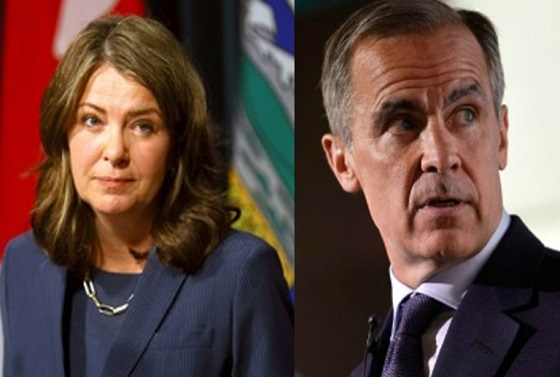
 Energy2 days ago
Energy2 days agoCarney bets on LNG, Alberta doubles down on oil
-

 Alberta2 days ago
Alberta2 days agoAlberta on right path to better health care
-
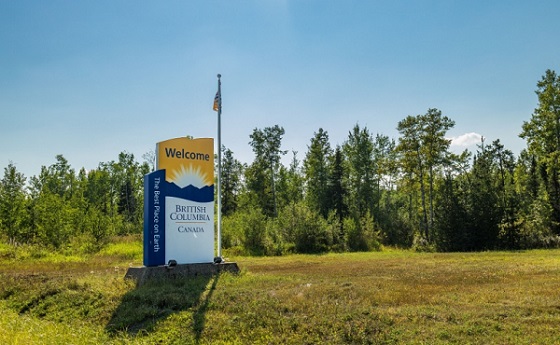
 Indigenous2 days ago
Indigenous2 days agoTop constitutional lawyer slams Indigenous land ruling as threat to Canadian property rights
-
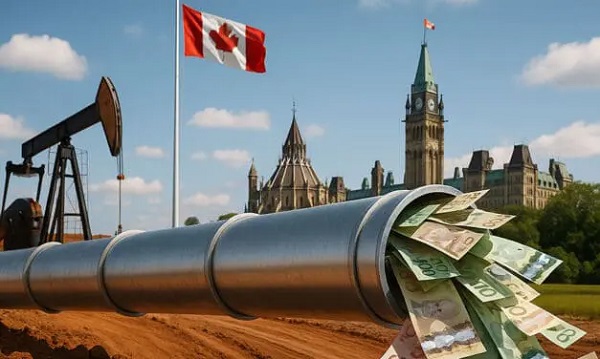
 Alberta2 days ago
Alberta2 days agoCarney government’s anti-oil sentiment no longer in doubt
-
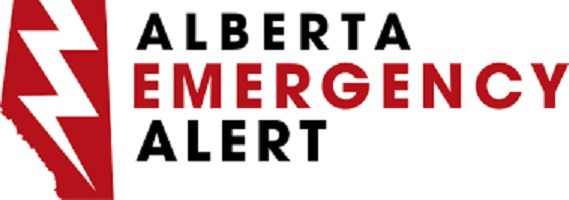
 Alberta2 days ago
Alberta2 days agoAlberta Emergency Alert test – Wednesday at 1:55 PM
-

 Alberta1 day ago
Alberta1 day ago‘Weird and wonderful’ wells are boosting oil production in Alberta and Saskatchewan
-

 Business1 day ago
Business1 day agoCanada is failing dismally at our climate goals. We’re also ruining our economy.
-

 Health2 days ago
Health2 days agoSPARC Kindness Tree: A Growing Tradition in Capstone










